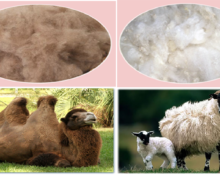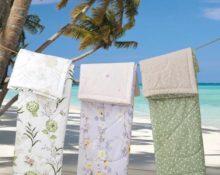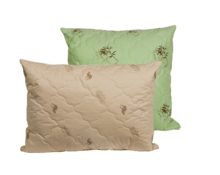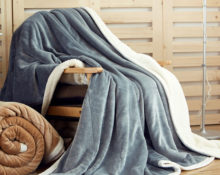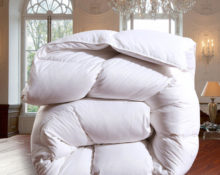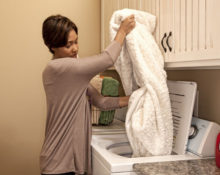The wool sheepskin blanket and the bamboo blanket are in the same price category. They are classified as goods with high and medium availability. There are no elite products among them. Otherwise, these beddings are radically different from each other. They have different consumer properties, and they perform at their best in different conditions. It’s difficult to say which one is better, let’s take a closer look at their characteristics.
Sheep blanket - pros and cons
This filler has been used for a very long time and is in no hurry to abandon it, although many “smart” artificial substitute materials have appeared. Consistency in the matter is explained by the following advantages:
 excellent warming properties (warms with dry heat);
excellent warming properties (warms with dry heat);- possibility of use all year round (regardless of the weather, it helps maintain body temperature at the required values);
- wear resistance;
- absorbs sweat;
- good breathability (hence high hygienic properties, as well as the absence of factors that provoke profuse sweating).
If you combine dry heat, good heating ability and breathability, you get a product that is ideal for people with sore joints and problem skin. However, preservation of properties is possible only with proper handling of the blanket and provided that the manufacturer has processed the filler well. If the wool was not thoroughly cleaned at the preparatory stage, then it is not considered harmless.
Important! Uncleaned fleece causes allergies, heats worse and tolerates contact with liquids. Garbage attracts insects.
Wear resistance is a relative advantage. With careful and proper handling, a quilted blanket made of high-quality sheep wool will last 6–10 years, but during this time it will have time to become a “home” for a huge amount of dust, allergens and other harmful particles. Well, a small child will render the thing unusable in 2–3 years. Due to wetness and careless handling, the fibers will simply become confused, disintegrate and begin to collect in the corners.
Important! Quilted wool items usually last a little longer than unquilted ones.
Natural materials always attract dust mites, because bedding from them must be systematically ventilated and thoroughly washed. The last procedure in the case of a wool sheep blanket is much more difficult. Manufacturers everywhere prohibit hand and machine washing of their products. This is because it is impossible to achieve adequate conditions for the filler at home.
If you ignore the instructions and decide to wash a sheep wool product yourself, most likely the integrity of the internal material will be compromised. The fibers will disintegrate and begin to clump. It will no longer be possible to stay warm under such a blanket. Therefore, to preserve their consumer properties, such bedding should be dry cleaned. The services of specialists are expensive, and the result of the application does not always correspond to expectations.
Characteristics of Bamboo Blanket
It has 3 significant advantages:
 it is inexpensive;
it is inexpensive;- lung;
- it can be wetted and washed at home (this is in theory, but in practice the outer fabric of bamboo blankets unravel during cleaning).
Due to the ingress of liquid, bamboo fibers do not rot or break down. To preserve their qualities, you only need to dry the blanket in a timely manner.. Moreover, there are no special requirements for the process. The filler fiber does not break under its own weight, due to which even a vertical placement method is acceptable.
Important! In fact, the share of bamboo fibers in many products does not exceed 10–20%. The remaining 80–90% comes from artificial materials. It is they that provide many positive qualities, from hygroscopicity to the strength of the filler fibers.
High moisture-resistant properties are not always a plus. For example, they impair sweat absorption. This is critical, since in fact, even a healthy person constantly secretes fluids from the sweat glands. In sick and weakened people, the process is much more active. Therefore, they will feel uncomfortable under such a blanket.
Low cost can also turn from advantages to disadvantages.Some manufacturers, in an attempt to reduce the price of an already budget bamboo blanket, use low-quality synthetics as the top material. It breaks easily. To create a puff, a fingernail hook is enough. Therefore, we can’t talk about any machine wash.. The cheapest bedding will simply tear at the top, and the good waterproof properties of the filling will not help protect the entire thing.
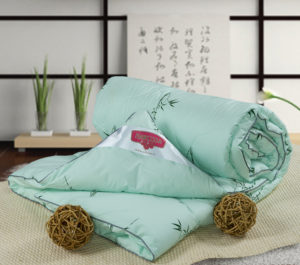 Due to its fragility, the outer fabric of these blankets is prone to pilling. They appear even with constant use of the duvet cover. If you don't use it at all, the top material will wear out within the first few weeks of purchasing the blanket.
Due to its fragility, the outer fabric of these blankets is prone to pilling. They appear even with constant use of the duvet cover. If you don't use it at all, the top material will wear out within the first few weeks of purchasing the blanket.
In general, many of the “advantages” declared by factories cause skepticism. For example, they claim that the hygienic qualities of bamboo are maintained due to the presence of honey pectin in the composition. In fact, manufacturers do not indicate exactly how much substance is in the blanket, so you should not hope that its use will have a positive effect on the condition and elasticity of the skin or in any way slow down the aging process. Such assurances are just a marketing gimmick, whose unreliability becomes obvious when connected to the issue of science.
Important! Synthetic threads accumulate static electricity and are also a good conductor. Bedding made from such materials generates electric shock. To eliminate the effect, it is necessary to wash duvet covers for bamboo blankets with chemicals that have a pronounced antistatic effect.
The filler itself will thin out and because of this it will stop heating after 2 years, maximum - after 4. In some cases, the blanket becomes unusable even earlier. Therefore, in the long term, the idea of saving on bamboo products is not often confirmed. Basically, the benefits are only momentary.
In terms of softness, this type of bedding is also inferior to some of its analogues. The blanket may seem very rough, does not fold well and molds to the body's shape during the first stages of use. With use, these properties will soften, just like their owner.
What is better - bamboo or sheep's wool?
 The answer depends on the buyer's goals and budget. If you need a light blanket that will be moved from room to room, then you need to buy bamboo. This product is not a pity, because it will definitely come in handy for a family with children who do not always use bedding for its intended purpose and have not yet developed the habit of carefully handling things.
The answer depends on the buyer's goals and budget. If you need a light blanket that will be moved from room to room, then you need to buy bamboo. This product is not a pity, because it will definitely come in handy for a family with children who do not always use bedding for its intended purpose and have not yet developed the habit of carefully handling things.
If you need a wear-resistant blanket that will reliably protect you from the cold in winter and in a poorly heated apartment, then you definitely need to purchase a product made from sheep wool. Bamboo is not able to provide comfortable sleep in such conditions. It will be cold under it, which in a certain context can lead to a cold.
At the same time, within the framework of the topic of health, it is impossible to say which type of blankets will be better. The very fact of using something other than wool as a filler should not stop you. Regarding allergies, it is impossible to say with certainty that one of the options under consideration is absolutely safe. Either material can cause an inadequate reaction, but statistically the likelihood of the disease occurring is higher in the case of wool. On the other hand, its warming effect is valued for diseases of the bones and musculoskeletal system.
Bamboo fiber has nothing to brag about in this regard. And they definitely shouldn’t envelop a person whose heat exchange is permanently or temporarily impaired. Contrary to the assurances of the factories, this filler is not able to absorb and evaporate moisture normally. This is noticeable even in winter after turning on the central heating, but is most pronounced in summer.
Based on this, older people and people prone to colds should choose wool over bamboo, but allergy sufferers should do the exact opposite.


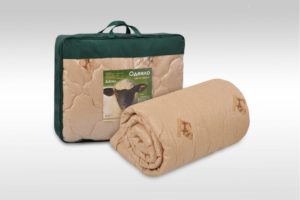 excellent warming properties (warms with dry heat);
excellent warming properties (warms with dry heat);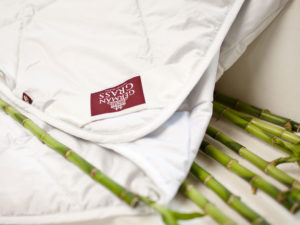 it is inexpensive;
it is inexpensive; 0
0